-

Telehealth Implementation
Project Members: Samuel Bonet OlivenciaSponsors/Partners: Coordination CentricThe project revolves around understanding the impact of the integration of telehealth technologies on the clinician’s workflow is vital for the achievement of a fully functional system. A lack of understanding of such an important aspect
of the system design could lead to underutilization of the technology, or even rejection, from the clinician’s’ perspective. The application of a systems engineering holistic approach to this problem provides an opportunity to identify
ways to minimize the clinician workflow disruption while efficiently communicating the data collected from the telehealth technologies. Additionally, it aids in synthesizing the clinician’s perspectives into a set of requirements for
the design of the information visualization displays and interfaces.Drowsy Driving Mitigation among Shift Work Nurses
Project Members: Alec Smith,Ethan LarsenSponsors/Partners: Human Factors and Machine Learning (HFML) Lab; Houston Methodist Research Institute, National Safety Council (NSC), Houston Methodist Research Institute (HMRI), Road to Zero Safe Systems Innovation GrantThis research utilizes a user-centered approach to develop educational and technological interventions to prevent drowsy driving among shift work nurses. Moreover, it involves a naturalistic driving study and analyzes data gathered from
the study in order to develop algorithms that can detect drowsy driving.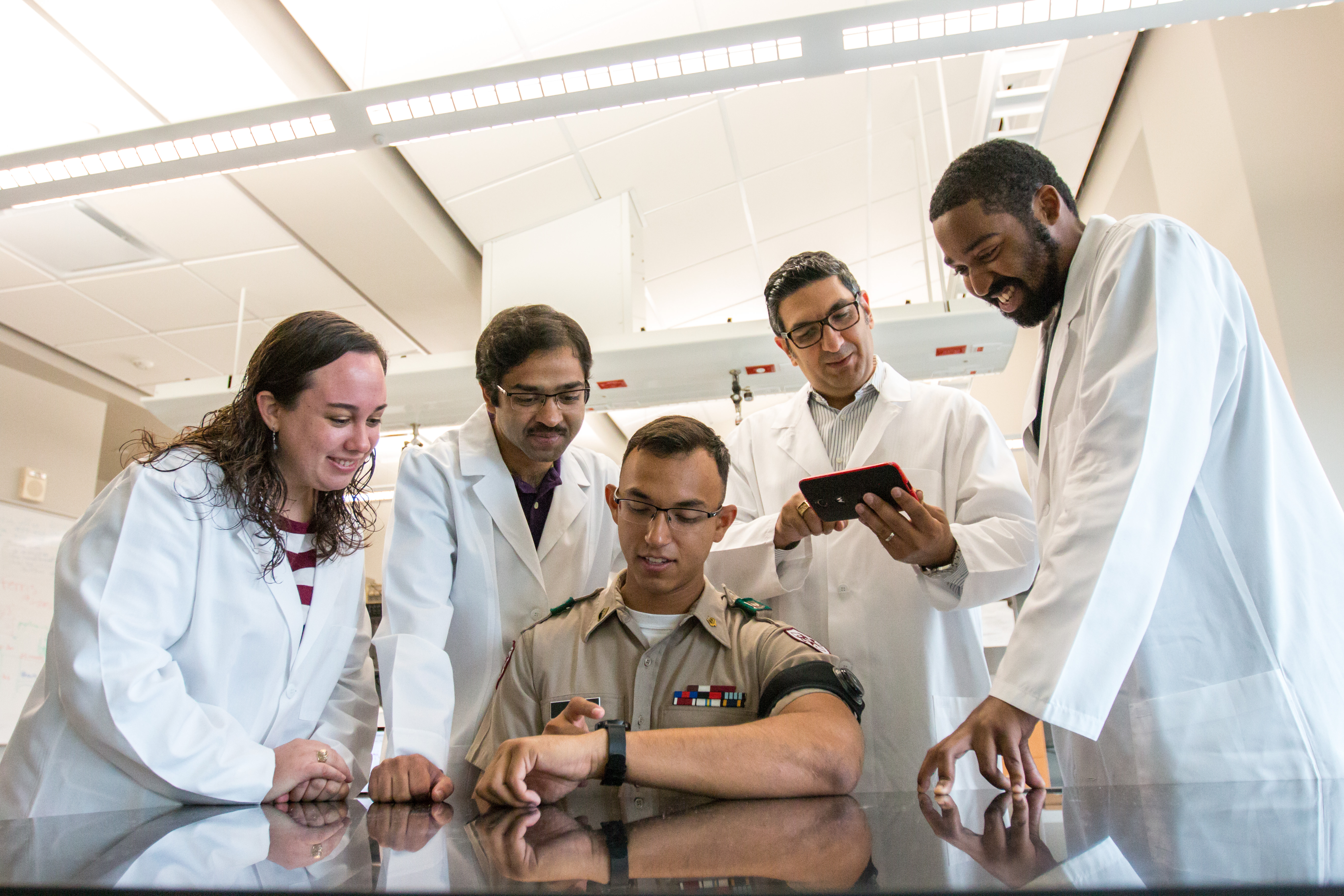
PTSD Continuous Monitoring Systems
Project Members: Arjun Rao, Mahnoosh Sadeghi, Karim Zahed, Carl Markert, Carolina Rodriguez-Paras, Alec SmithSponsors/Partners: Project HERO, Texas A&M Engineering Experiment Station (TEES), Veterans Administration (VA), HERO Trak Inc.In this project, an easy-to-use and efficient PTSD information system is being developed. Biometric data will be collected using a sensor-based mobile app designed for veterans and then be presented to clinicians to provide them with
additional information about a patient’s therapeutic progress. The system will provide sensor-based monitoring of important mental state information and will help veterans to communicate patients’ key mental state changes, thus enabling
clinicians to access and monitor patients by presenting them with information that supports their work and meets their expectation.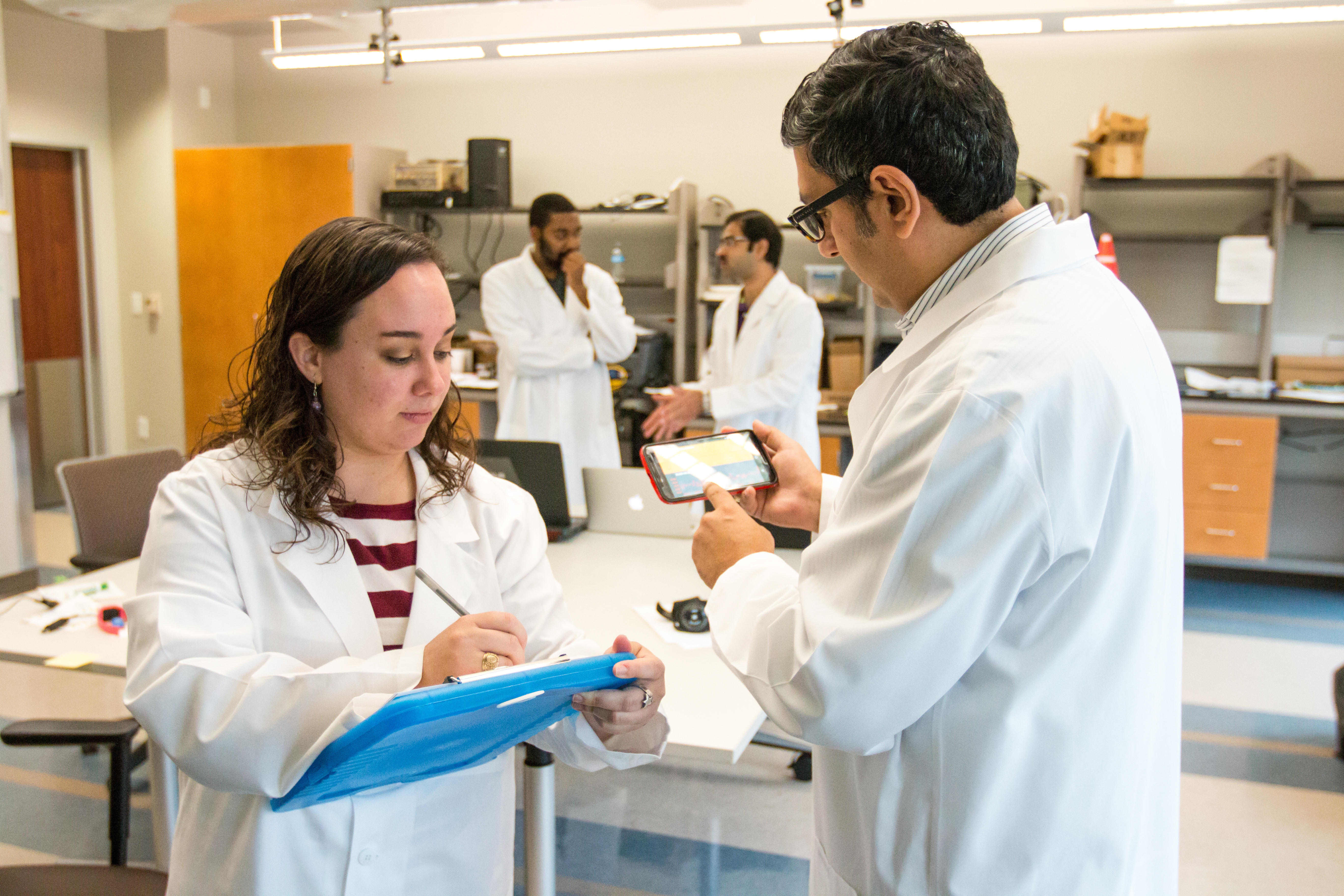
Provider Health and Performance Monitoring
Project Members: James Flores, Ineen Sultana, John KluthSponsors/Partners: TEES, Houston Methodist Hospital, Baylor Scott & WhiteThis project is centered around the design of a smart connected system to help nurses who experience high workload and stress. The tool uses wearable sensors to measure biometric information and infers periods of high workload and stress.
This information is then transmitted to other parts of systems such as displays that provide information about the availability or interruptability of the nurse. This is a collaborative project with UHCL and Memorial Hermann South
Hospital.
Interruption Mitigation in ICU
Project Members: Patricio Rodriguez-ParasSponsors/Partners: TEES, Baylor Scott & WhiteICU nurses are often interrupted during high-severity tasks. In, this project we are developing interruption mitigation technologies to reduce unnecessary interruptions or interruptions at inopportune times in several ICU settings. Our
previous research provides strong support for efficacy of smart systems that improve unit’s awareness of nurses’ task-at-hand and task severity. Using a combination of observational and laboratory studies we are also investigating
the effects of interruptions on working memory and task resumption.
Avoidable Readmissions
Project Members: Samuel Bonet OlivenciaSponsors/Partners: NSF CHOT, Mainline HealthCredit: Illustration by Michael Helfenbein[/caption]This research explores how readmission decisions are made in a large hospital. We are evaluating technological mitigations or redesign of the system to support readmission decision-making and to assure
the most appropriate level of care for patients. Some health systems have developed ‘ED rerouting’ initiatives to urgent care centers as part of addressing this problem, but access to the most appropriate level of care still remains a problem in the U.S.
Team Decision-Making in Emergency Response
Project Members: Jukrin Moon, Changwon SonSponsors/Partners: NSF, Mary Kay O’Connor Process Safety Center (MKOPSC)This collaborative project between ACE-lab, School of Public Health, Mary Kay O’Connor Process Safety Center, and TAMU Emergency Operations Training Center aims at investigating how team decisions are made in a complex emergency response
high-fidelity simulator to inform the design of technologies and methodologies that support team cognition.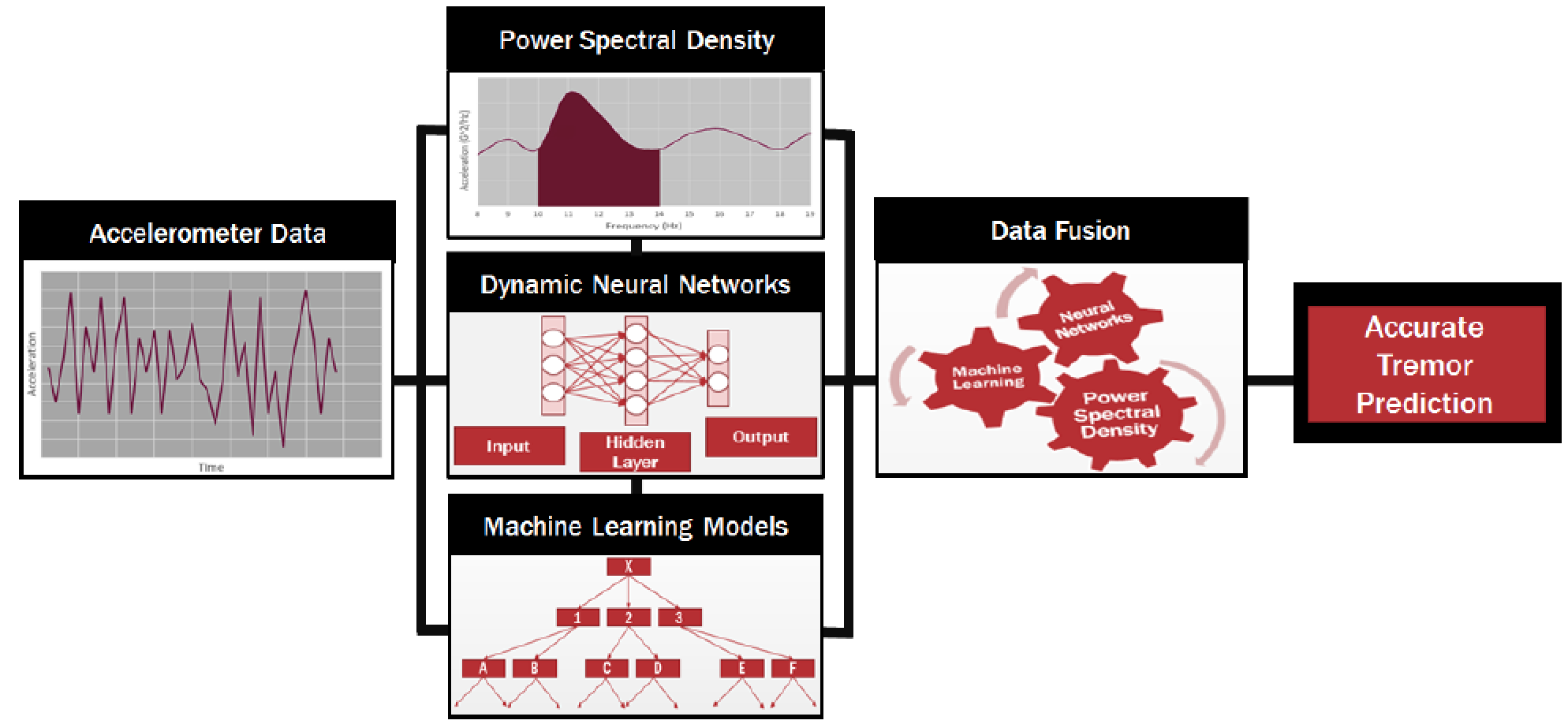
Hypoglycemia Continuous Monitoring
Project Members: Karim ZahedSponsors/Partners: Qatar National Research Foundation (QNRF), Sidra HospitalThis project investigates the efficacy of a novel hypoglycemic detection and warning system. The system involves a secure, non-invasive wearable proactive technology that detects early onsets of hypoglycemic tremors. This collaborative
project involves research teams from Industrial and System Engineering, Center for Remote Health Technologies and Systems, and School of Public Health at Texas A&M University as well as Sidra Hospital and Texas A&M University
at Qatar.
Process Control Accident Visualization
Project Members: Arjun RaoSponsors/Partners: TEESProcess control accidents documentations are extremely voluminous. A nuclear accident documentation may include hundreds of pages qualitative information that are maintained in databases that are often non-searchable or suffer from poor
usability. In this project, we investigate visualization of accidents using network theory. Accident visual networks’ emergent properties would simplify understanding the main contributors and interactions between events.
Disaster Ergonomics
Project Members: Changwon Son, Jukrin MoonSponsors/Partners: NSF, Mary Kay O’Connor Process Safety Center (MKOPSC)In order to cope with increasing complexity and business pressure of modern complex systems, this research project examines principles and methods for enhancing resilient performance such as early hazard detection, continuous adaptation
to emerging changes and quick recovery from disruptions. This project is a multidisciplinary effort that involves ACE-lab, School of Public Health and Mary Kay O’Connor Process Safety Center. This research is conducted in the domain
of large-scale emergency management simulation operated by TEEX (Texas A&M Engineering Extension Service).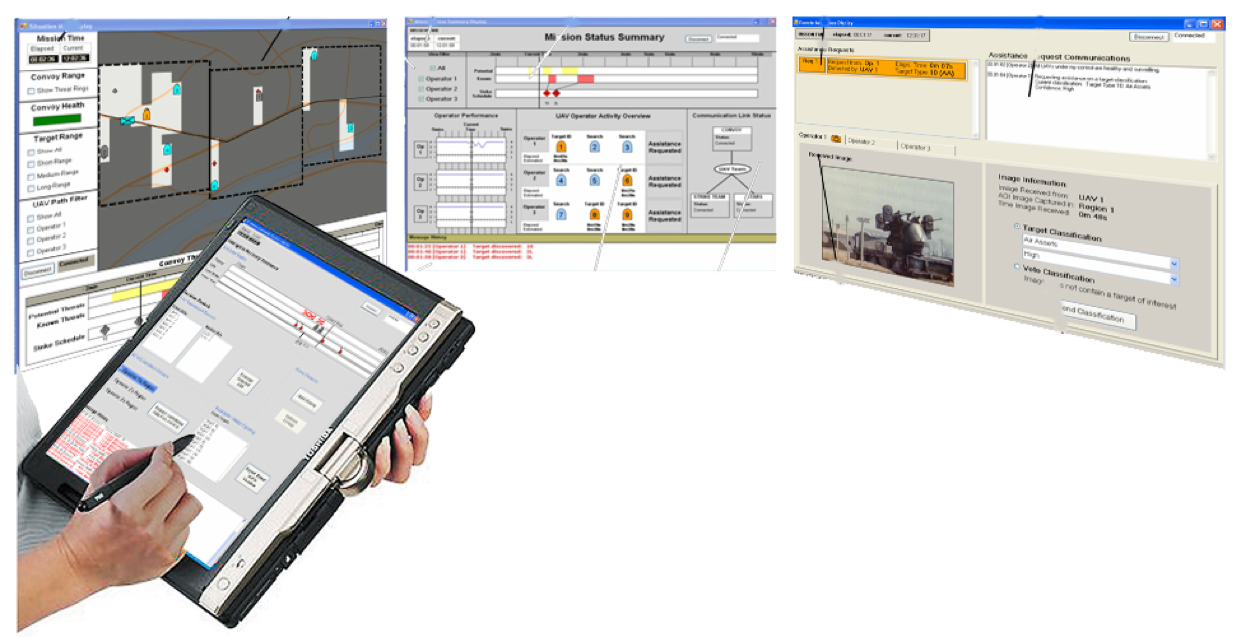
Supervisory-level Decision Support
Project Members: Arjun RaoSponsors/Partners: TEESSupervisors in in complex control room settings such as emergency response, space operations, and command and control are not only in charge of assessing the “mission” but also monitoring the performance of personnel and making tactical
decisions. This project involves the design of supervisory-level displays to support detecting the changes and maintaining situation awareness (SA) of an ongoing mission.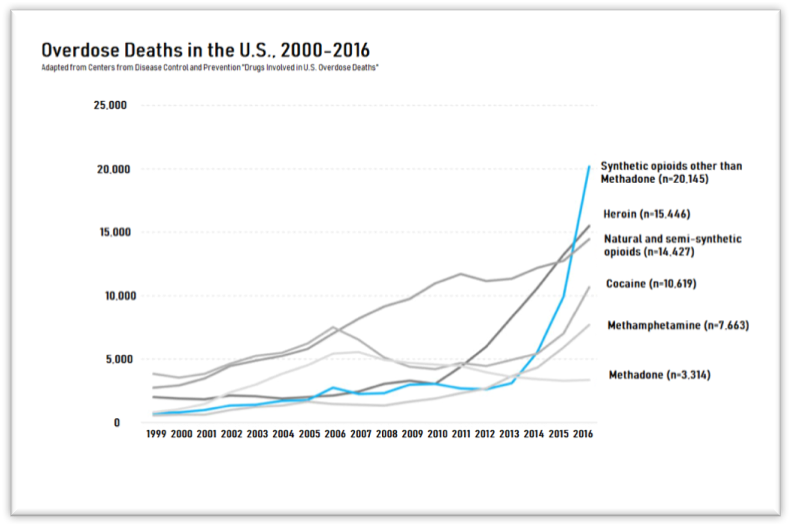
Continuous Monitoring of Opioid Withdrawal
Project Members: Farzan SasangoharSponsors/Partners: NeuroErgonomics Lab, Houston Methodist Hospital, T3In this project, a means to assess and proactively warn clinicians about a patient’s withdrawal status through the use of wearable smart sensing technology is being developed. By identifying withdrawal markers before the patient is acutely
symptomatic the care trajectory can be altered from one of relapse and abuse to recovery and return to a non-opioid dependent life. The rapid response will enable clinicians to assist patients suffering from withdrawal in identifying
their condition and administering the appropriate care rapidly, increasing the likelihood of an end to the patient’s opioid dependency.
Remote Health Technologies for Pediatric Population
Project Members:Sponsors/Partners: NSF, Texas Children’s HospitalRemote health technologies vary in terms of cost, patient adherence and utility, and effectiveness in terms of implementation success, desired health outcomes, and impact on capacity. The multi-institutional research project will explore
the benefits of patient monitoring in various settings, including complex pediatric patients and patients with chronic diseases in the U.S. -

Telehealth Implementation
Project Members: Samuel Bonet OlivenciaSponsors/Partners: Coordination CentricThe project revolves around understanding the impact of the integration of telehealth technologies on the clinician’s workflow is vital for the achievement of a fully functional system. A lack of understanding of such an important aspect
of the system design could lead to underutilization of the technology, or even rejection, from the clinician’s’ perspective. The application of a systems engineering holistic approach to this problem provides an opportunity to identify
ways to minimize the clinician workflow disruption while efficiently communicating the data collected from the telehealth technologies. Additionally, it aids in synthesizing the clinician’s perspectives into a set of requirements for
the design of the information visualization displays and interfaces.Drowsy Driving Mitigation among Shift Work Nurses
Project Members: Alec Smith,Ethan LarsenSponsors/Partners: Human Factors and Machine Learning (HFML) Lab; Houston Methodist Research Institute, National Safety Council (NSC), Houston Methodist Research Institute (HMRI), Road to Zero Safe Systems Innovation GrantThis research utilizes a user-centered approach to develop educational and technological interventions to prevent drowsy driving among shift work nurses. Moreover, it involves a naturalistic driving study and analyzes data gathered from
the study in order to develop algorithms that can detect drowsy driving.
PTSD Continuous Monitoring Systems
Project Members: Arjun Rao, Mahnoosh Sadeghi, Karim Zahed, Carl Markert, Carolina Rodriguez-Paras, Alec SmithSponsors/Partners: Project HERO, Texas A&M Engineering Experiment Station (TEES), Veterans Administration (VA), HERO Trak Inc.In this project, an easy-to-use and efficient PTSD information system is being developed. Biometric data will be collected using a sensor-based mobile app designed for veterans and then be presented to clinicians to provide them with
additional information about a patient’s therapeutic progress. The system will provide sensor-based monitoring of important mental state information and will help veterans to communicate patients’ key mental state changes, thus enabling
clinicians to access and monitor patients by presenting them with information that supports their work and meets their expectation.
Provide Health and Performance Monitoring
Project Members: James Flores, Ineen Sultana, John KluthSponsors/Partners: TEES, Houston Methodist Hospital, Baylor Scott & WhiteThis project is centered around the design of a smart connected system to help nurses who experience high workload and stress. The tool uses wearable sensors to measure biometric information and infers periods of high workload and stress.
This information is then transmitted to other parts of systems such as displays that provide information about the availability or interruptability of the nurse. This is a collaborative project with UHCL and Memorial Hermann South
Hospital.
Interruption Mitigation in ICU
Project Members: Patricio Rodriguez-ParasSponsors/Partners: TEES, Baylor Scott & WhiteICU nurses are often interrupted during high-severity tasks. In, this project we are developing interruption mitigation technologies to reduce unnecessary interruptions or interruptions at inopportune times in several ICU settings. Our
previous research provides strong support for efficacy of smart systems that improve unit’s awareness of nurses’ task-at-hand and task severity. Using a combination of observational and laboratory studies we are also investigating
the effects of interruptions on working memory and task resumption.
Team Decision-Making in Emergency Response
Project Members: Jukrin Moon, Changwon SonSponsors/Partners: NSF, Mary Kay O’Connor Process Safety Center (MKOPSC)This collaborative project between ACE-lab, School of Public Health, Mary Kay O’Connor Process Safety Center, and TAMU Emergency Operations Training Center aims at investigating how team decisions are made in a complex emergency response
high-fidelity simulator to inform the design of technologies and methodologies that support team cognition.Hypoglycemia Continuous Monitoring
Project Members: Karim ZahedSponsors/Partners: Qatar National Research Foundation (QNRF), Sidra HospitalThis project investigates the efficacy of a novel hypoglycemic detection and warning system. The system involves a secure, non-invasive wearable proactive technology that detects early onsets of hypoglycemic tremors. This collaborative
project involves research teams from Industrial and System Engineering, Center for Remote Health Technologies and Systems, and School of Public Health at Texas A&M University as well as Sidra Hospital and Texas A&M University
at Qatar.
Opioid Withdrawal
Project Members: Farzan SasangoharSponsors/Partners: Houston Methodist Hospital, T3In this project, a means to assess and proactively warn clinicians about a patient’s withdrawal status through the use of wearable smart sensing technology is being developed. By identifying withdrawal markers before the patient is acutely
symptomatic the care trajectory can be altered from one of relapse and abuse to recovery and return to a non-opioid dependent life. The rapid response will enable clinicians to assist patients suffering from withdrawal in identifying
their condition and administering the appropriate care rapidly, increasing the likelihood of an end to the patient’s opioid dependency.
Process Control Accident Visualization
Project Members: Arjun RaoSponsors/Partners: TEESProcess control accidents documentations are extremely voluminous. A nuclear accident documentation may include hundreds of pages qualitative information that are maintained in databases that are often non-searchable or suffer from poor
usability. In this project, we investigate visualization of accidents using network theory. Accident visual networks’ emergent properties would simplify understanding the main contributors and interactions between events.
Disaster Ergonomics
Project Members: Changwon Son, Jukrin MoonSponsors/Partners: NSF, Mary Kay O’Connor Process Safety Center (MKOPSC)In order to cope with increasing complexity and business pressure of modern complex systems, this research project examines principles and methods for enhancing resilient performance such as early hazard detection, continuous adaptation
to emerging changes and quick recovery from disruptions. This project is a multidisciplinary effort that involves ACE-lab, School of Public Health and Mary Kay O’Connor Process Safety Center. This research is conducted in the domain
of large-scale emergency management simulation operated by TEEX (Texas A&M Engineering Extension Service).
Supervisory-level Decision Support
Project Members: Arjun RaoSponsors/Partners: TEESSupervisors in in complex control room settings such as emergency response, space operations, and command and control are not only in charge of assessing the “mission” but also monitoring the performance of personnel and making tactical
decisions. This project involves the design of supervisory-level displays to support detecting the changes and maintaining situation awareness (SA) of an ongoing mission. -

Avoidable Readmissions
Project Members: Samuel Bonet OlivenciaSponsors/Partners: NSF CHOT, Mainline HealthThis research explores how readmission decisions are made in a large hospital. We are evaluating technological mitigations or redesign of the system to support readmission decision-making and to assure
the most appropriate level of care for patients. Some health systems have developed ‘ED rerouting’ initiatives to urgent care centers as part of addressing this problem, but access to the most appropriate level of care still remains a problem in the U.S.
Image Credit: Michael Helfenbein.
Remote Health Technologies for Pediatric Population
Project Members:Sponsors/Partners: NSF, Texas Children’s HospitalRemote health technologies vary in terms of cost, patient adherence and utility, and effectiveness in terms of implementation success, desired health outcomes, and impact on capacity. The multi-institutional research project will explore
the benefits of patient monitoring in various settings, including complex pediatric patients and patients with chronic diseases in the U.S.
Applied Cognitive Ergonomics Lab
Testing the Boundaries of Innovation
